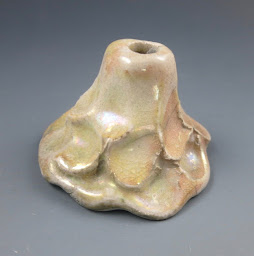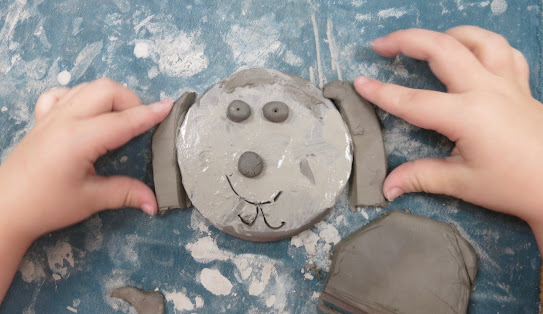Why do kids love clay so much?
The most loved art supply by children is clay. It is the perfect tactile and moldable material for little hands to manipulate. Working with clay can be very calm and relaxing. Manipulating clay can help relieve stress. Having the freedom to explore and discover on your own is very freeing. To a child clay is magical. They love to squeeze it, poke it, pound it and shape it. Combine it with a child's imagination and its possibilities are endless. They are naturally fascinated by it and will create with it for long periods without help from an adult. They often get into the flow state without even realizing time has past so quickly. Playing with clay has many great benefits for children of all ages.
Here are some of children’s favorite things to create with clay.
The Pizza Pie
One of the number one things kids love to shape out of clay is a pizza pie. With pepperoni of course. So many kids are familiar with playing with their food, so making it out of clay comes naturally to them. Pounding clay flat is so much fun! Once flat it is easy to imagine it as a pancake or a pizza. They even like to pretend they are eating it.
Snakes
Making a coil out of clay naturally looks like a wiggly worm or a snake to a child. Of course it's a child's favorite - snakes are cool!
Volcanos
Boys especially loves making these erupting things.Pinch Pots
Making food and the containers to put it in comes naturally to a child. Clay can be easily shaped into a bowl or drinking cup.
Children's Developmental Stages Using Clay
The Exploration Stage
Early Childhood
This stage is characterized by the pure sensory experience of the modeling material. Children will pat it, pound it, squish it, poke it, pinch it, and play with it. They will make no attempt to make the clay or play dough into something. They just enjoy partaking in the sheer pleasure of exploring it with their senses and manipulating it.
The Control Stage
Age 4-6 Kindergarten
At this stage, children use their fingers and palms to make basic forms with the clay like a ball, pancake or worm. Their fine motor skills are beginning to take shape and they can start to control the clay or dough.
The Named Forms Stage
Age 6-7 Grades k-1
During this stage children give names and labels to modeled forms. They engage in narrative play with their products and use them like toys. Playing with clay engages the child's imagination and lends itself to the benefits of the creative process naturally. Clay is the perfect creative material because it can be reinvented over and over again by a child's imagination.
The Symbolic Forms Stage
Age 7-9 Grades 1-3
After repeated experiences working with clay, children can now plan the forms that they want to make. They can use their fingers to join pieces together, add details, pull forms out of a larger piece of clay and use clay tools. Their finished products will be recognizable by others. They start modeling people, animals and food.
The Realism Stage
Age 10-12 Grades 4-6
Providing children with repeated experiences working with clay, helps children to develop skills towards mastery. Children can then use clay as a medium to express their own ideas and life experiences through art making.
Written by: Art Teacher Ruth Post
























